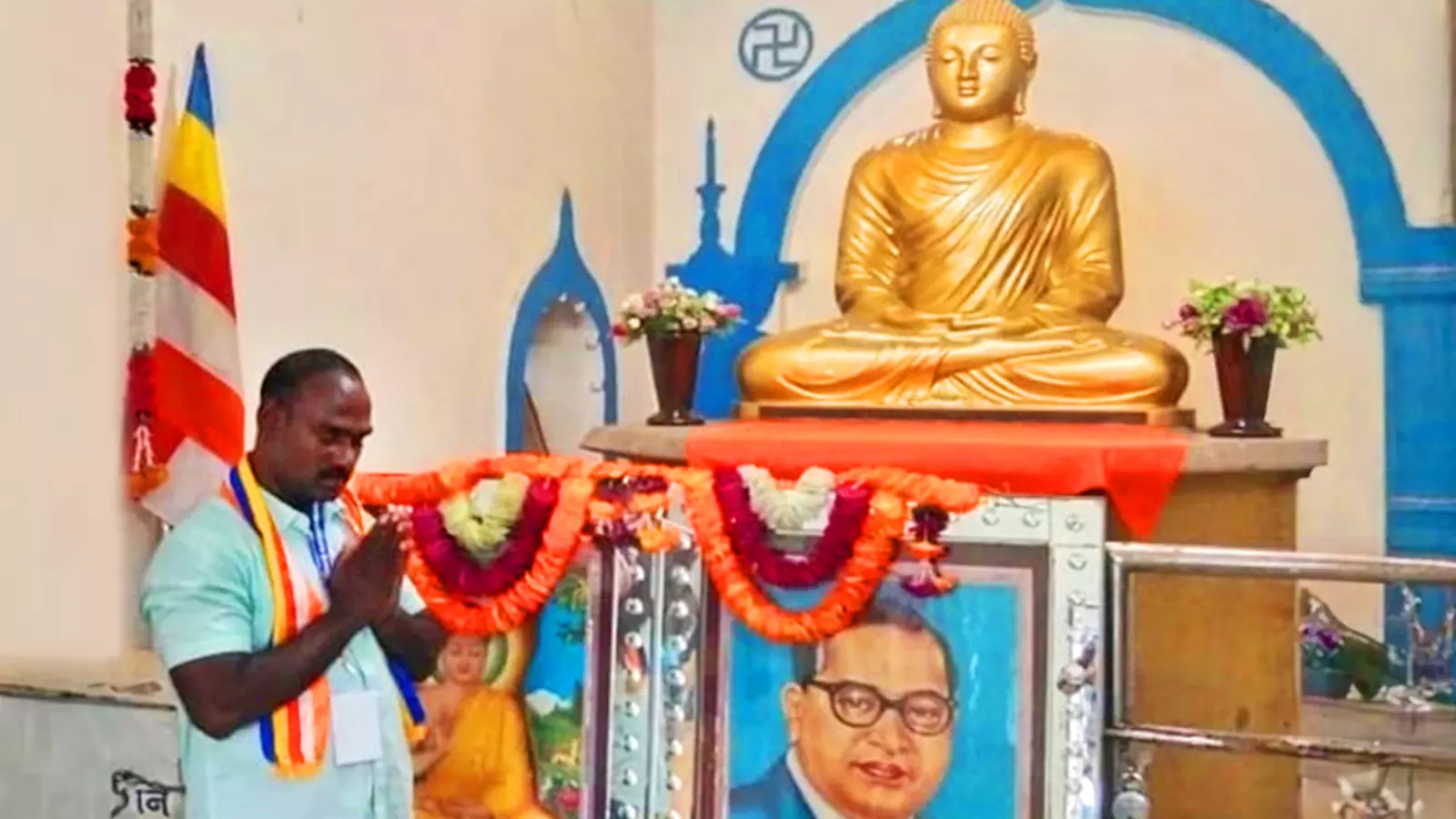
Rising wave of Buddhism in TN: Conversion as a fight against casteism
Plagued by caste injustices, Tamil Nadu is witnessing a fast spread of Buddhism. Does it usher in new hope or signify a return to old roots?

Last October, 49-year-old A Velavan from Achirapakkam village in Tamil Nadu travelled to Deeksha Bhoomi in Nagpur to embrace Buddhism. Hailing from a Dalit family and deeply scarred by caste-based injustices, Velavan viewed conversion as a path to liberation—a step towards securing dignity and equality for himself and future generations. Reflecting on his life, Velavan recounted his tenure as the 10th ward councillor of Achirapakkam in 2011 and the struggles he faced in advocating for basic rights, including the establishment of a cemetery for his community.
A growing movement of conversion
Velavan’s story echoes the experiences of many others in Tamil Nadu who have turned to Buddhism in recent years. The Neo-Buddhist movement has fostered new rituals and ceremonies to mark life events, often led by locally trained or Sri Lankan monks. According to the 2011 Census, the Buddhist population in Tamil Nadu had more than doubled from 5,393 in 2001 to 11,186. Experts anticipate a sharper increase in the next census, driven by anti-caste ideologies and the influence of figures like BR Ambedkar.
The legacy of Ambedkar and Ayodhya Dasar
Velavan’s conversion aligns with a broader socio-political context shaped by the teachings of Ambedkar and Pandit Ayodhya Dasar. In 1956, Ambedkar’s historic embrace of Buddhism in Nagpur inspired millions to reject caste-based oppression. Much earlier, Tamil scholar and anti-caste activist Pandit Ayodhya Dasar pioneered similar movements in Tamil Nadu. Over 124 years ago, he built a temple that remains active today, symbolizing resistance to caste discrimination. Ayodhya Dasar envisioned Buddhism as an alternative to Hinduism, empowering marginalized communities to challenge systemic oppression.
Buddhism’s cultural resonance in Tamil Nadu
Buddhism’s historical roots in Tamil Nadu date back to the 3rd and 4th centuries CE, as evidenced by Buddha statues and literary works like the Buddhist epic Manimegalai. Researchers argue that Hinduism’s later appropriation of Buddhist practices obscured its original prominence. The religion’s resurgence during India’s independence struggle laid the groundwork for social reform, with Buddhism forming the ideological foundation for Tamil Nadu’s Dravidian and anti-caste movements.
Also read: Rajnath in Laos: Global adoption of Buddhist principles must to resolve conflicts
The role of Neo-Buddhist narratives in popular culture
Filmmakers like Pa Ranjith and Mari Selvaraj have woven Buddhist principles into their works, addressing caste oppression and discrimination through cinematic storytelling. These films often depict Buddha’s imagery as a symbol of resistance and equality, resonating deeply with audiences advocating for social justice.
Expert insights on Buddhism’s role in social reform
Speaking to The Federal, S Gautaman, president of the South India Buddha Vihar, and writer P Vijayakumar emphasized Buddhism’s enduring relevance in dismantling caste hierarchies. Vijayakumar highlighted how Buddhism inspired policies of social justice in Tamil Nadu, becoming the cornerstone of anti-caste ideologies that underpin the state’s political movements.
A Hopeful Path Forward:
For Velavan and many like him, embracing Buddhism is not just a spiritual shift but a transformative act of resistance. By rejecting caste-based oppression and embracing the egalitarian principles of Buddhism, they aim to forge a future where dignity and equality prevail.
As the next census approaches, the growing number of converts in Tamil Nadu signals a significant societal shift. The question remains: Can Buddhism’s revival lead to a more inclusive and just society, or will challenges persist in dismantling entrenched caste structures?
The content above has been generated using a fine-tuned AI model. To ensure accuracy, quality, and editorial integrity, we employ a Human-In-The-Loop (HITL) process. While AI assists in creating the initial draft, our experienced editorial team carefully reviews, edits, and refines the content before publication. At The Federal, we combine the efficiency of AI with the expertise of human editors to deliver reliable and insightful journalism.

